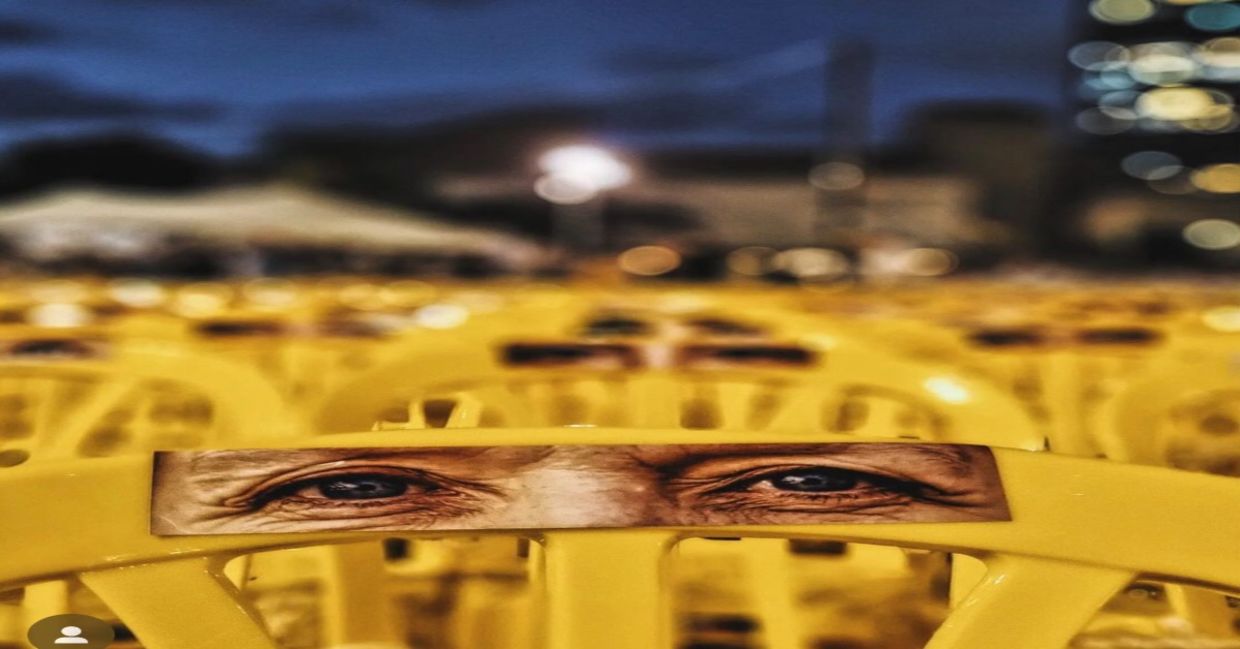
(Photo @ credit ikloit)
On October 7, 2024, Israel experienced one of its darkest days. As the country continues to mourn the loss of life following the horrific terrorist attacks carried out by Hamas, artists and cultural institutions have come together to pay tribute to the victims, offering spaces for collective memory, reflection, and healing. The Times of Israel reports that the Tel Aviv Museum of Art has opened exhibitions dedicated to this tragic event, inviting the public to visit, reflect, and seek moments of solace amidst the heartbreak.
Collective testimony
One exhibition is entitled “I don’t want to forget” with works by Israeli artists that are part of the collection of Mareva and Arthur Essebag. The exhibition showcases the evolution of how we remember the events of October 7 and explores the role of art during times of crisis - with works by 25 Israeli artists, nearly all created in response to that tragic day. Some artists engage directly with the haunting testimonies and images that have become part of our collective memory, while others adopt a more nuanced approach to trauma. Some explore themes of fear and terror, while others highlight tenderness and human connection.
“This is all a little bit dark, it’s a whispering place. But if you take time to visit quietly, you will find light,” Arthur Essebag, the French news presenter and producer who spoke at the museum as the exhibit opened, is quoted as saying in the Times of Israel.
Another exhibition is entitled “War decorations 23-24”, featuring works of Tal Mazliach, using her symbolic and personal imagery to depict her harrowing experiences when she was besieged for more than 20 hours in her home in Kibbutz Kfar Aza, until she was rescued.
The exhibitions are part of a broader initiative of artistic and collective testimony across Israel in response to the massacre. Museums, galleries, and public spaces are working together to provide places of remembrance, mourning, and ultimately, hope for the future. As Aurora Israel points out, this collective testimony is essential for a community grappling with grief, giving voice to the emotions that words often fail to capture.
Focus on light
The exhibitions offer a poignant tribute through a series of visual art pieces that capture both the rawness of the tragedy and the resilience of the human spirit. The museum, known for its modern and contemporary art, has carefully curated pieces that not only honor the lives lost but also provide a space for quiet contemplation.
The decision to focus on light in this context is not accidental. Amidst the overwhelming darkness of the events, the museum aims to offer hope—a beacon of light that shines through even the most difficult times. The art displayed reflects the complexities of grief, yet it also seeks to remind viewers that there is always light to be found in the shadows. The artists contributing to the exhibitions have woven together a narrative that touches on survival, resilience, and the hope for a better tomorrow.
Art to help process trauma
Art has long been a way for societies to process trauma, and Israel’s artistic community is no exception. The Tel Aviv Museum of Art and other cultural institutions across the country have been instrumental in channeling the nation's grief into a shared experience. This is evident in the contributions of various Israeli artists, whose works offer not only a mirror to the devastation but also a path forward. As Aurora Israel mentions, art can serve as both a personal and communal testimony, capturing moments of trauma and providing a means for people to navigate their emotions.
As visitors walk through the exhibitions, they are reminded of the power of art to bring people together. The museum encourages visitors to take their time, to sit in silence, and to reflect on both the individual and collective loss. Through this artistic journey, the exhibitions become a place not only to remember those who were lost but to find a sense of peace and light amidst the tragedy.
By engaging with the art and taking the time to reflect, visitors can find moments of quiet contemplation and, ultimately, a sense of hope. The exhibitions stand as a testament to the resilience of the Israeli spirit and the role that art plays in guiding communities through their most difficult times.
YOU MIGHT ALSO LIKE:
Artists Transform Lovelock Bridge to Advocate for Release of Israeli Hostages
Israeli Jiu-Jitsu Champion Dedicates Gold Medal Win to Fallen Friends
A Musical Tribute Celebrating Israel's Cultural Tapestry on Martin Luther King Jr Day








